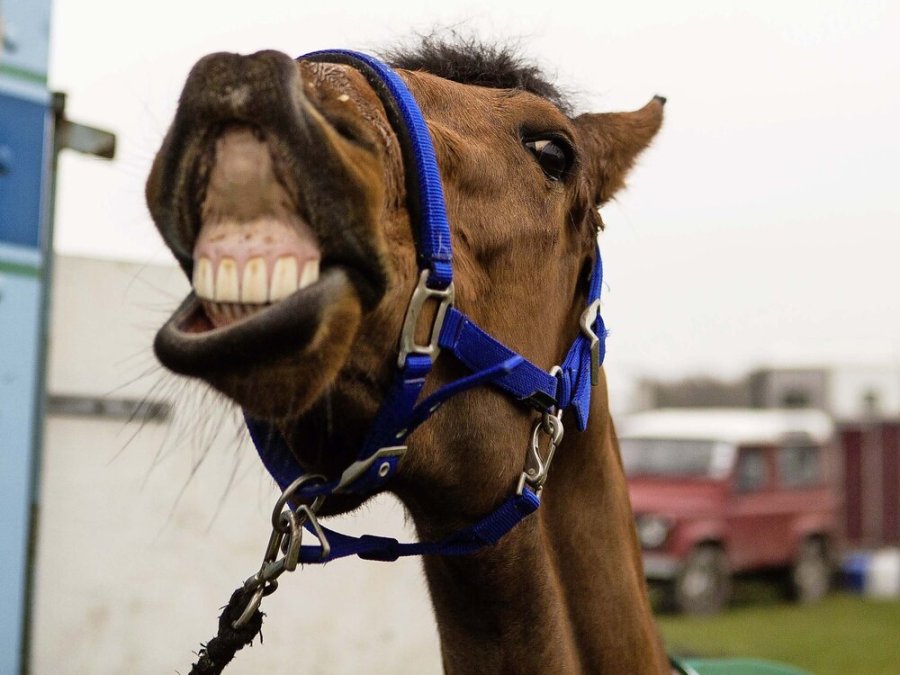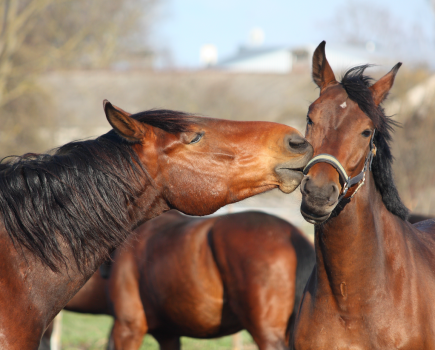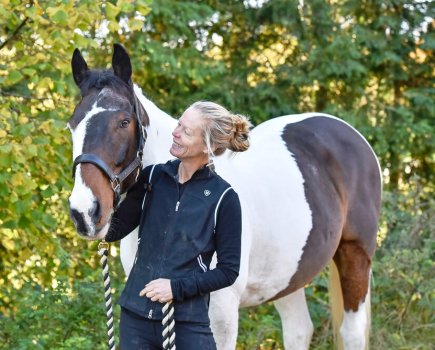Horses are largely silent animals and rarely vocalise. Instead they use body language, behaviour and even scent to leave chemical messages in the form of pheromones.
“As we rely so much on verbal communication it can be difficult for us to see and understand their subtle expressions and movements,” explains equine behaviour consultant Justine Harrison.
Your horse’s eyes and ears can tell you a lot about his moods. But his nose and mouth are also expressive areas that can communicate how he is feeling – we just need to learn to understand his body language.
Getting mouthy
Tension around the mouth can indicate a number of emotional states – worry, fear, confusion or even mild aggression. The mouth or muzzle can become tight, pinched or pursed.
An open mouth with visible teeth can mean different things depending on the context:
- If your horse’s ears are back, this is a clear sign of aggression.
- If he bares his teeth or his mouth gapes while he’s being ridden, he may be anxious, trying to avoid the bit or in pain. Get his teeth examined by an equine dental technician and check the fit of his bridle and bit. Try a bites bridle and see if the behaviour stops.
A horse in severe pain may also have a relaxed mouth and droopy lower lip, but you’d also most likely see flared nostrils and tension in the rest of the face.
Noticing that tension could make all the difference and ensure that the horse gets the urgent treatment he requires.
Follow your nose
Flared nostrils are a sign of arousal – whether in excitement (such as play), fear, or when startled, but also on meeting a new horse or investigating a new stimulus or environment.
The nostrils may narrow and elongate with wrinkles appearing behind them indicating annoyance, irritation or an aggressive threat.
A long, elongated nose indicates tension and can often be seen in ridden horses, but it’s also visible when your horse is reaching for something like a branch overhead, when playing, or when you scratch his itchy spot!
The flehmen response is where a horse raises his head, extends his neck and rolls back his top lip, showing his front teeth.
Horses do this when they find an interesting smell and want to analyse it further. After the horse inhales the smell, he curls up his top lip to close the nasal passages and transfers the scent containing pheromones (chemical messengers) into the vomeronasal organ.
Horses can get a lot of information from another horse’s pheromones and it’s thought that this may include another horse’s stress level, their reproductive status, their age and what they eat.
We may also see the flehmen response when horses are about to colic or when they’re suffering from abdominal pain.
Don’t miss the latest issue of Your Horse Magazine, jam-packed with training and veterinary advice, horse-care tips and the latest equestrian products available on shop shelves, on sale now.









